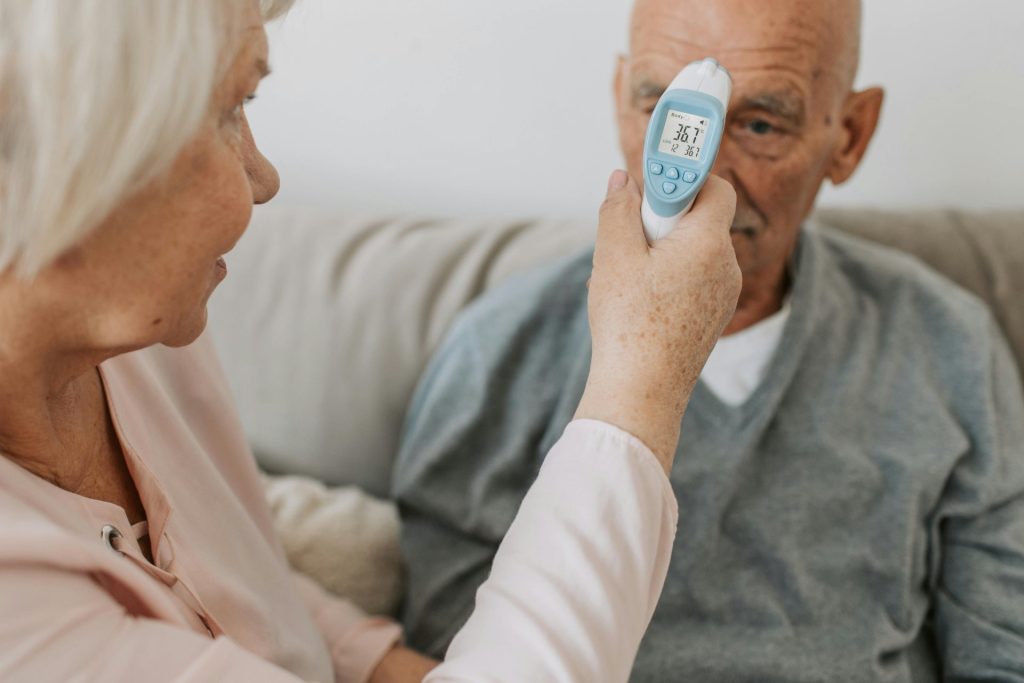The Case for Medical Bracelets in Everyday Risk Management – Daily Business

For most people, risk management doesn’t start until something goes wrong. A slip at the supermarket, an unexpected allergic reaction, or even a routine jog that ends in a fainting spell—these are the moments when preparation matters most. Yet when we think about personal safety, we often skip the basics and jump straight to high-tech solutions or complex plans. What’s often overlooked? A simple bracelet.
Medical alert bracelets may look like everyday accessories, but they play a vital role in emergency situations. Whether you’re managing a chronic condition or simply value preparedness, these bracelets offer a quiet, efficient layer of protection. They’re not about drawing attention—they’re about getting the right kind of attention when it matters most.
In fact, more people are turning to emergency bracelets with medical info as part of their personal contingency plans. These tools don’t just serve seniors or high-risk individuals. They’re for anyone who recognizes that health events don’t always come with a warning—and being silent when you most need help isn’t an option.

 Photo by Vlada Karpovich: https://www.pexels.com/photo/woman-i-long-sleeve-shirt-holding-blue-and-white-digital-device-5790718/
Photo by Vlada Karpovich: https://www.pexels.com/photo/woman-i-long-sleeve-shirt-holding-blue-and-white-digital-device-5790718/Why Medical Bracelets Still Matter in a Tech-Heavy World
We live in an age of apps, wearables, and voice-activated everything. So why rely on something as analog as a bracelet? Because no battery lasts forever, and no network is 100% reliable.
Unlike smartphones or smartwatch health trackers, medical bracelets work even when tech fails. They don’t need Wi-Fi, cellular data, or Bluetooth to function. When time is critical—like in an accident or medical emergency—first responders aren’t scrolling through your apps. They’re trained to check your wrist or neck for medical ID jewelry. This tiny bit of information can cut down precious minutes of guesswork.
Those with epilepsy, diabetes, heart conditions, severe allergies, or even rare disorders can benefit enormously from this low-tech, high-value tool. So can athletes, children with special needs, or adults who may become disoriented during an episode of low blood sugar or a panic attack.
Emergency Response Isn’t Guesswork—So Don’t Make It One
Imagine an EMT arrives on the scene and finds someone unconscious. There’s no time to wait for family members. No way to guess their medical history. Every second is a race against time.
Now imagine that same person is wearing a bracelet that clearly states: “Type 1 Diabetic – Insulin Dependent – Penicillin Allergy.” Suddenly, there’s no guesswork. The medical team knows what not to administer and what the likely cause could be. It’s efficient. It’s potentially life-saving.
Risk management is all about limiting unknowns. A good bracelet turns your medical unknowns into quick, actionable facts.
More Than a Senior Safety Tool
While often associated with older adults, medical bracelets have evolved beyond that limited scope. Think of how many demographics now carry critical medical info that could affect emergency treatment:
- Kids with autism or non-verbal communication needs
- College students with seizure disorders
- Runners and cyclists training solo
- People with life-threatening allergies
- Individuals on blood thinners or immune suppressants
These aren’t fringe use cases—they’re everyday people, going about daily life with just enough risk to make a difference in an emergency. A bracelet isn’t overkill—it’s common sense.
Low Effort, High Payoff: The ROI of Wearing One
From a risk mitigation standpoint, a medical alert bracelet offers one of the best returns on effort. Here’s why:
- You only need to put it on once. Unlike carrying a medical card or remembering to update an app, a bracelet becomes part of your daily routine.
- It speaks when you can’t. Whether you’re unconscious, confused, or in too much pain to talk, it tells responders exactly what they need to know.
- It travels with you. Whether you’re at work, at the gym, or on holiday, your info is always within arm’s reach—literally.
- It’s discreet. Modern medical bracelets are often stylish, minimal, and blend easily with other accessories.
For caregivers, there’s also peace of mind. You can’t follow a loved one everywhere, but you can make sure they’re equipped with what could become the most important item they wear that day.
Making It Useful: What Info Should Be Included?
To work well, a medical bracelet needs the right details. Not everything fits on a small surface, so prioritization is key.
Here’s what’s most important:
- Primary medical condition(s) – Diabetes, epilepsy, heart condition, etc.
- Allergies to medication or foods – Especially those relevant to emergency care like penicillin or latex.
- Essential medications – If you’re insulin-dependent, on blood thinners, or use an EpiPen, that matters.
- Emergency contact info – Either a phone number or a “See Wallet Card” message for expanded details.
- Other critical data – Like blood type or whether you have a pacemaker.
A good rule of thumb? If a responder needs to know it before they touch you, it should be on your bracelet.
Business-Minded Safety: Why This Topic Belongs on the Desk, Not Just the Nightstand
For business owners, HR teams, or corporate leaders, this isn’t just a personal safety issue—it’s a workplace liability and wellness opportunity.
Let’s say your team includes remote workers, field agents, or individuals with known health conditions. Encouraging (or even subsidizing) medical alert wearables can lower response time and reduce the severity of on-the-job emergencies.
It also signals a safety-first culture. Instead of reactive crisis management, you’re embedding risk planning into the day-to-day lives of your staff. And from a purely operational view: faster response means fewer complications, lower insurance risk, and higher odds of full recovery.
Real People, Real Stories
Here’s where theory meets reality:
- Jake, 29, cyclist – Suffered a crash during a solo ride. First responders saw “Type 1 Diabetes” on his bracelet and administered glucose without delay.
- Maria, 65, caregiver – Has Alzheimer’s and tends to wander. Her bracelet includes her diagnosis and caregiver’s phone number. When found confused in a park, bystanders called the number directly.
- Lena, 42, executive – Lives with a rare cardiac condition. After fainting during a flight delay, airport staff used her medical bracelet to communicate her risk factors to paramedics.
Each of these people had something in common: no time to explain, but a bracelet that did the talking for them.
What Makes a “Good” Medical Bracelet?
All bracelets aren’t created equal. Here are a few practical features to look for:
- Durability – Waterproof, heat-resistant, and scratch-proof materials hold up better in real-world situations.
- Clear engraving – Easy-to-read text is a must, even if it’s stylish.
- Adjustable fit – It should be comfortable enough to wear all day, not something that gets left at home.
- Flexible design options – Some prefer leather bands, others silicone or stainless steel. Style helps with long-term compliance.
- Updatable info – If your condition or medication changes, the bracelet should be easy to replace or update.
Bonus points if the bracelet pairs with a QR code, NFC chip, or links to a secure digital profile. That way, detailed info can still be accessed if needed—without overcrowding the physical band.
Don’t Wait for the Wake-Up Call
Like seatbelts or smoke alarms, the point of a medical bracelet is that you hope you never need it. But when you do, it’s not just helpful—it’s crucial.
Too many people wait for a close call before investing in something so simple. But whether you’re building out a family emergency plan, fine-tuning your personal safety routine, or managing health concerns for a loved one, this tool deserves a place in your strategy.
Preparedness isn’t paranoia. It’s respect for the fact that life is unpredictable—and smart people stack the odds in their favor.
Final Thoughts: A Bracelet with Backbone
At first glance, a medical alert bracelet might look like just another accessory. But it’s more than that. It’s a message. A plan. A contingency in stainless steel or silicone.
And for those who live with uncertainty—whether due to medical conditions, caregiving responsibilities, or the simple unpredictability of modern life—this tiny piece of gear carries surprising weight.
Sometimes the smartest safety upgrade isn’t flashy or expensive. It’s just a well-engraved bracelet that helps people help you, faster.
#Case #Medical #Bracelets #Everyday #Risk #Management #Daily #Business







